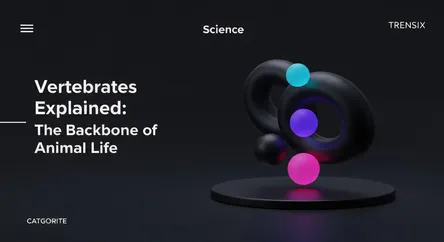Science
Vertebrates Explained: The Backbone of Animal Life

An introduction to vertebrates, the diverse group of animals with a backbone that includes mammals, birds, reptiles, amphibians, and fish.
What is it?
A vertebrate is an animal distinguished by the presence of a backbone or spinal column. This internal skeleton, made of bone or cartilage, provides structural support, allows for movement, and protects the spinal cord. This group belongs to the phylum Chordata and includes some of the most well-known lifeforms on Earth, such as mammals, birds, reptiles, amphibians, and various classes of fish. All vertebrates share key characteristics at some stage of life, including a notochord, a dorsal hollow nerve cord, and a distinct head with a brain. They exhibit incredible diversity, ranging in size from tiny frogs to massive blue whales.
Why is it trending?
Vertebrates are a constant focus of scientific research and public interest due to widespread conservation concerns. Studies frequently highlight significant declines in vertebrate populations globally. The Living Planet Index, for example, has shown a dramatic decrease in monitored vertebrate populations since 1970. This trend raises alarms about a potential sixth mass extinction event, driven by threats like habitat loss, pollution, and climate change. Ongoing fossil discoveries, like those of early dinosaurs, also keep vertebrates in the spotlight, offering new insights into the evolution of life on Earth.
How does it affect people?
Vertebrates are integral to human life and the planet's ecosystems. They are a primary source of food, including fish, poultry, and livestock. Many vertebrates are kept as companions, such as dogs, cats, and birds, enriching human lives. Ecologically, they play crucial roles as predators, prey, pollinators, and seed dispersers, maintaining the balance of their habitats. The health of vertebrate populations is a key indicator of overall environmental health. Their decline can disrupt ecosystems, impacting everything from pest control to the stability of the food web, which ultimately affects human well-being and resources.